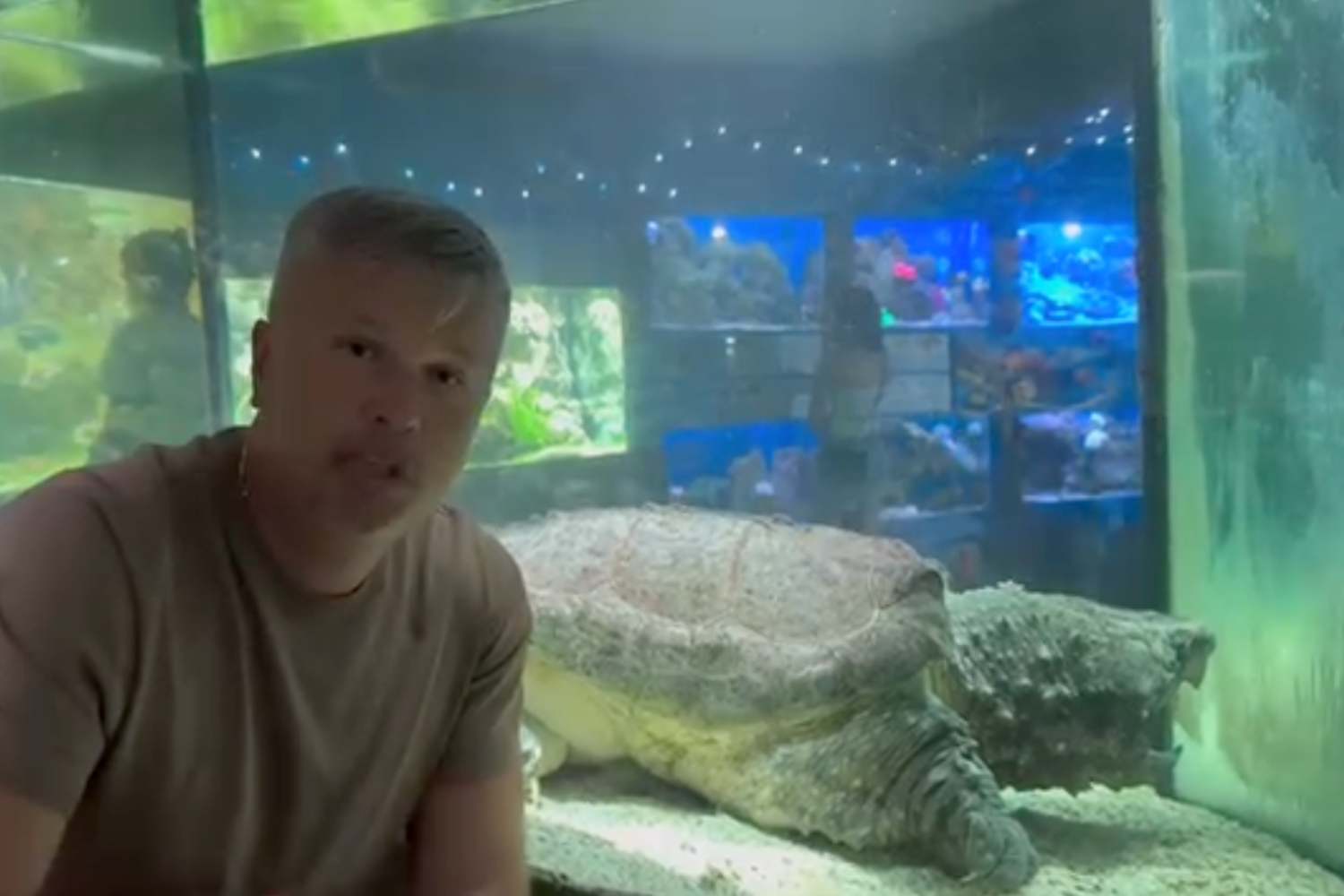Over 20 years in captivity: Change.org campaign demands freedom for alligator snapping turtle confined in 317-gallon tank in Crimea aquarium far too small for prehistoric giant.

@alushta_aqua
More than two decades have passed since an alligator snapping turtle was first confined to a small aquarium in Alushta, Crimea. An animal that in nature can reach impressive dimensions – over 6.5 feet (2 meters) in length and more than 200 pounds (90 kilograms) in weight – finds itself instead surviving in a tank of just 317 gallons (1200 liters), a minuscule space compared to its real biological needs.
The outcry comes from a campaign on Change.org, launched by British citizen Shara Browning, who is demanding the animal be transferred to a sanctuary or rehabilitation center, where it can live in dignified conditions and recover part of its lost freedom.
This story speaks to something deeper than just one turtle’s plight. It reflects our complex relationship with wildlife and the uncomfortable truths about how we sometimes rationalize keeping magnificent creatures in spaces that would feel claustrophobic to us, let alone to animals evolved for vast aquatic territories.
The international mobilization
In just a few weeks, the petition has collected thousands of signatures from around the world, attracting the attention of activists, environmentalists, and outraged ordinary citizens. In the comments, harsh words appear: “inhumane,” “shocking,” “cruel.” Words it’s impossible not to agree with. The request is singular: restore to this turtle at least an environment compatible with its nature.
The campaign doesn’t limit itself to pointing fingers at the aquarium, but also calls upon Ukrainian authorities to intervene. The problem, however, is complex: as we all well know, Crimea is a territory marked by political and legal tensions, and the protection of animals in captivity is virtually non-existent.
These prehistoric giants are among the largest freshwater turtles in North America, with males typically weighing between 155-200 pounds (70-90 kilograms) and reaching shell lengths up to 31 inches (80 centimeters). The disparity between their natural requirements and the cramped quarters they often endure in captivity becomes starkly apparent when you consider that experts recommend adults require enclosures of 200-800 gallons minimum, with many suggesting outdoor ponds or stock tanks for proper care.
The risks of misguided action
The organizers have issued a warning, though: too much media pressure could transform into a danger for the animal. In other Eastern European countries, similar cases have concluded with the sudden disappearance of animals, transferred secretly or even euthanized to avoid scandals.
The petition specifically notes concerns that “in Poland, when public attention builds around controversial animal cases, it’s sadly common for those animals to ‘disappear’ under mysterious circumstances,” and warns that “too much public pressure can put this turtle’s life in danger”.
This sobering reality check forces us to confront an uncomfortable truth: sometimes the very act of shining a light on animal suffering can inadvertently worsen their fate. It’s a delicate balance between advocacy and protection, between public pressure and quiet diplomacy.
For this reason, the campaign invites caution: not clamor, but responsible commitment made of awareness-raising, dialogue with institutions and contacts with local associations like VITA, active in defending animal rights. Only in this way will it be possible to offer this turtle a different future, made of clean water, sufficient space, and freedom of movement.
Understanding the species: Built for giants, trapped in miniature
Alligator snapping turtles aren’t just large – they’re evolutionary marvels. These solitary reptiles can hold their breath for 40 to 50 minutes and have specially adapted tongues that act as lures, attracting fish with what appears to be a wriggling worm. Their bite force can range between 8.2 and 1872 Newtons, heavily dependent on their size, and they can live 50 to 100 years.
The behavioral implications of keeping such a creature in inadequate conditions extend far beyond physical discomfort. These are animals that have remained virtually unchanged for millions of years, perfectly adapted to their riverine environments. Proper care requires following the rule of 20 liters of water per centimeter of shell length – meaning even a 25cm turtle needs a minimum 500-liter tank, making the 1200-liter tank in Alushta woefully inadequate for what is likely a much larger adult specimen.
A symbol of broader change
The case goes beyond this single turtle – it represents a symbol of a new approach toward animals detained in aquariums and marine parks. The growing global awareness of animal welfare standards puts pressure on facilities worldwide to either upgrade their conditions or face public scrutiny.
What makes this case particularly poignant is the temporal element: over 20 years of confinement means this turtle has spent potentially its entire adult life in these conditions. These turtles reach sexual maturity between 11 and 13 years of age, suggesting this individual may never have experienced anything approaching natural behaviors or environment.
The Change.org campaign represents more than just activism – it’s part of a larger global shift in how we view the ethics of keeping wild animals in captivity. Whether it succeeds in freeing this particular turtle or not, it has already succeeded in forcing difficult questions about the standards we accept for the creatures under human care.
In a world increasingly conscious of animal welfare, the image of a prehistoric giant confined to a space smaller than many people’s bathrooms serves as a powerful reminder that size isn’t just about physical comfort – it’s about dignity, behavioral needs, and the fundamental question of what we owe to the wild creatures we choose to keep.
Source: Change.org
